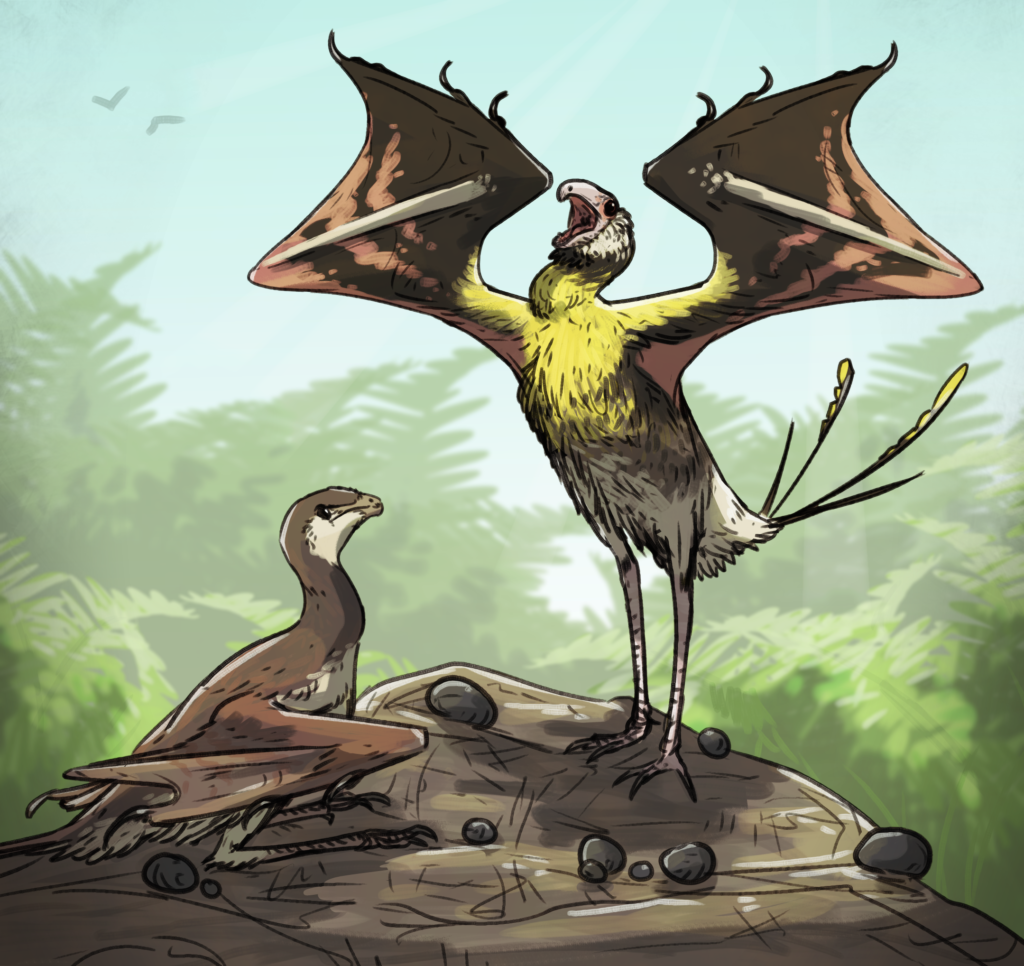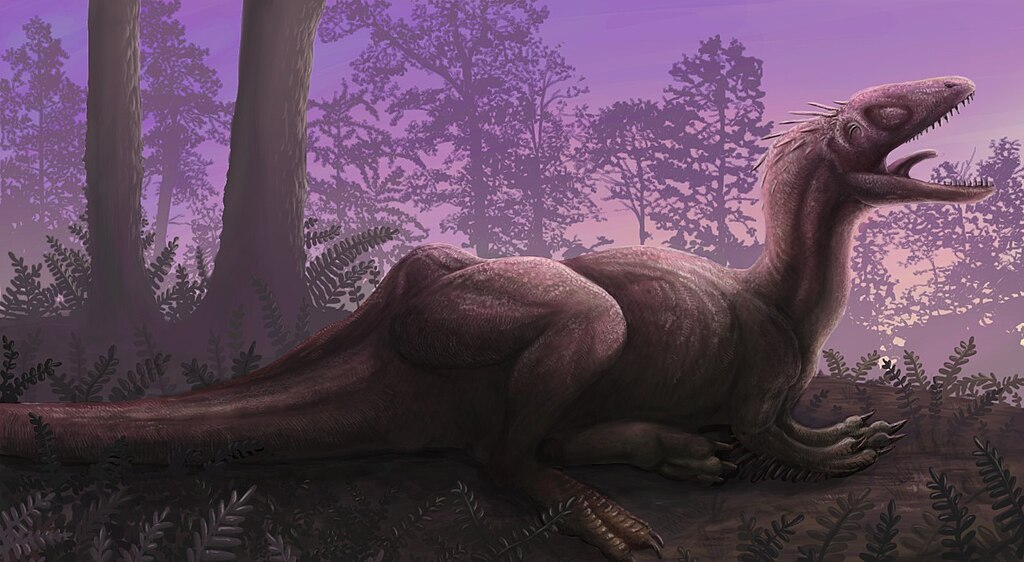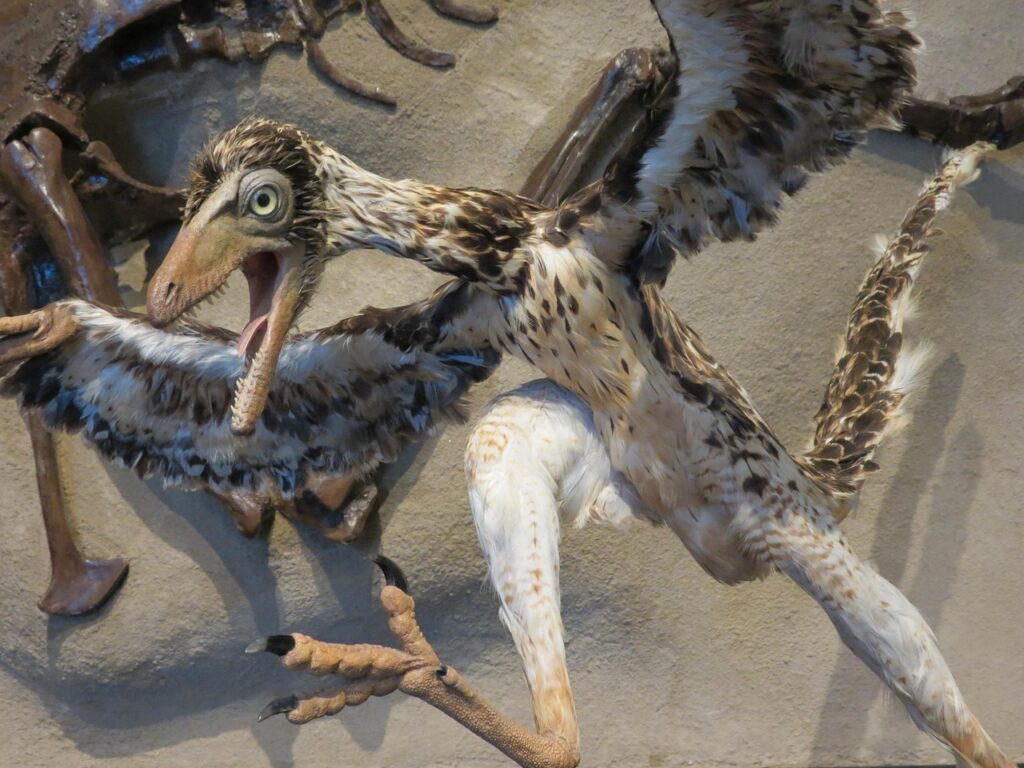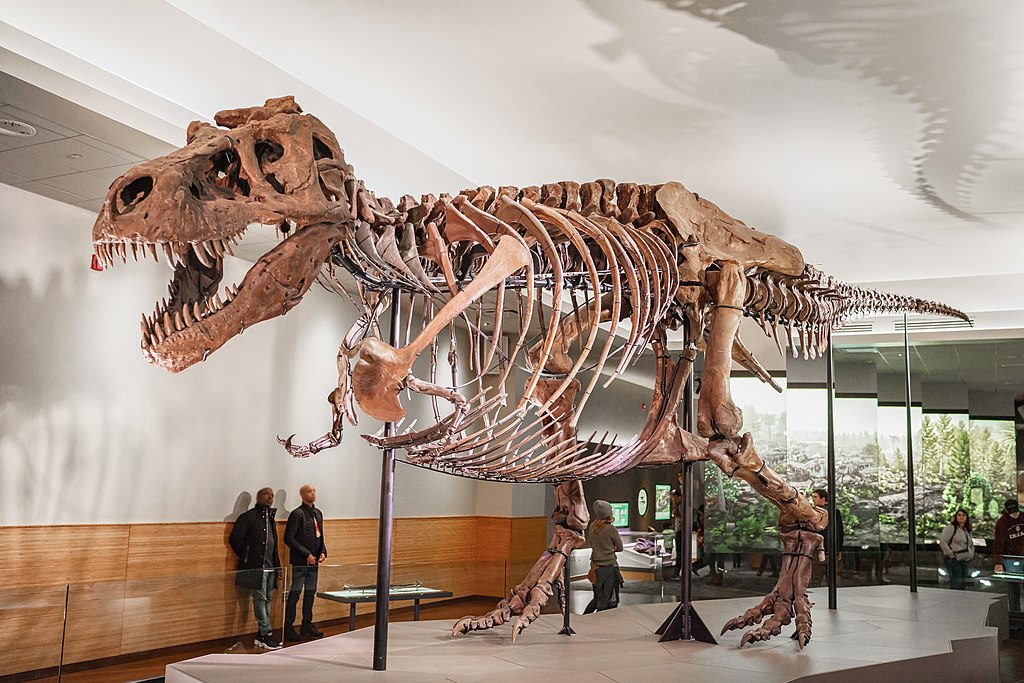While Tyrannosaurus rex and Velociraptor dominate popular culture thanks to blockbuster movies, the dinosaur family tree features hundreds of fascinating species that rarely get the spotlight they deserve. Beyond the household names, paleontologists have unearthed remarkable creatures with bizarre adaptations, unusual physical features, and evolutionary innovations that tell us much more about the Mesozoic world. These lesser-known dinosaurs not only expand our understanding of prehistoric biodiversity but also often represent crucial evolutionary links or showcase extraordinary adaptations that challenge our perceptions of these ancient reptiles. Let’s explore ten extraordinary dinosaurs that deserve more recognition for their unique place in Earth’s history.
Therizinosaurus: The Scissorhands Dinosaur

Sporting the longest claws of any known animal in history, Therizinosaurus was a truly bizarre theropod dinosaur that lived in Mongolia during the Late Cretaceous period. Despite being related to predatory dinosaurs, this 33-foot-long giant was a herbivore with claws reaching up to three feet in length. These impressive talons weren’t used for hunting but rather for pulling down tall branches, defense, and possibly for intimidating rivals. What makes Therizinosaurus particularly fascinating is its evolutionary journey—starting from carnivorous ancestors, it developed into a pot-bellied, long-necked plant-eater with a small head and a peaceful disposition, demonstrating how drastically body plans could shift in response to ecological opportunities. The creature’s strange appearance, with its “Edward Scissorhands” look, makes it one of paleontology’s most visually striking discoveries that deserves wider recognition.
Yi Qi: The Dinosaur That Almost Flew

Discovered in China and named only in 2015, Yi qi (pronounced “ee chee”) represents one of the most surprising dinosaur findings in recent years. This small, crow-sized dinosaur from the Middle-Late Jurassic period possessed membranous wings supported by a rod-like wrist bone that extended from its arm—a feature never before seen in dinosaurs. This unusual structure suggests Yi qi may have glided or even attempted powered flight completely independently from the evolutionary path that led to modern birds. The most remarkable aspect of Yi qi is that it represents a “failed experiment” in dinosaur flight, evolving bat-like wings millions of years before bats existed, yet ultimately leaving no descendants with this unique adaptation. Its discovery reminds us that evolution isn’t a straight line but a winding path with many dead ends and parallel innovations, making Yi qi a crucial piece in understanding the complex story of vertebrate flight.
Deinocheirus: The Hunchback Giant

For nearly 50 years, Deinocheirus remained one of paleontology’s greatest mysteries, known only from a pair of massive 8-foot-long arms discovered in Mongolia in 1965. Scientists speculated wildly about what the complete animal might have looked like, with many imagining a fearsome predator. The truth, revealed only in 2014 when complete specimens were finally described, was far stranger—Deinocheirus was a 36-foot-long, hump-backed omnivore with a duck-like bill, tall neural spines forming a sail on its back, and a peculiar waddling gait. Despite its intimidating name meaning “terrible hand,” this dinosaur was likely a gentle giant that used its claws to harvest plants and possibly dig for roots or aquatic foods along prehistoric shorelines. Its bizarre anatomy combines features that seem cobbled together from different dinosaur groups, making Deinocheirus one of the most unexpectedly unique dinosaurs ever discovered and a reminder of how incomplete our understanding of dinosaur diversity remains.
Microraptor: The Four-Winged Dinosaur

Microraptor represents one of the most important dinosaur discoveries for understanding the evolution of flight. This crow-sized dinosaur from Early Cretaceous China possessed not just two but four wings, with long flight feathers on both its arms and legs, creating a biplane-like configuration unlike anything living today. Preserved specimens show that Microraptor had iridescent black feathers that would have shimmered with a glossy blue-black sheen in sunlight, similar to modern crows and ravens. Paleontologists believe it glided between trees in dense forests, using its leg wings to help steer and stabilize itself during aerial descents. The discovery of Microraptor fundamentally changed our understanding of how flight evolved, suggesting that the ancestors of birds may have passed through a four-winged gliding phase before developing the two-winged powered flight we see in modern birds. This diminutive dinosaur exemplifies how evolutionary innovations often take unexpected forms before reaching the configurations we recognize today.
Pachyrhinosaurus: The Thick-Nosed Challenger

Living in western North America during the Late Cretaceous period, Pachyrhinosaurus offers a fascinating alternative to its more famous cousin,n Triceratops. Instead of the prominent horns that characterize most ceratopsians, Pachyrhinosaurus developed a massive, roughened bone pad (called a boss) over its nose and another above its eyes, creating a distinctive and formidable appearance. These unusual structures likely supported keratinous coverings in life, perhaps similar to a rhino’s horn but flatter and more expansive. Reaching up to 26 feet long, these herbivores traveled in herds and may have used their thickened nose bosses for shoving contests during mating season, with males competing by locking their massive heads together in displays of strength. Remarkably, different species of Pachyrhinosaurus show distinct variations in their cranial ornaments, suggesting these features were important for species recognition and potentially for attracting mates, providing insights into dinosaur social behaviors rarely preserved in the fossil record.
Gigantoraptor: The Ostrich on Steroids

Discovered in Inner Mongolia in 2005, Gigantoraptor represents one of the most surprising size explosions in dinosaur evolution. Despite belonging to the oviraptorosaur group—typically turkey-sized dinosaurs with beaks and feathers—Gigantoraptor reached a staggering 26 feet in length and weighed nearly two tons, making it approximately 300 times heavier than typical members of its family. This gigantic creature likely retained the feathered appearance of its smaller relatives, creating what would have essentially looked like a colossal, flightless bird with long arms, massive claws, and a toothless beak. What makes Gigantoraptor particularly noteworthy is how it challenges our understanding of size evolution and body plans—it grew enormous without developing the bulky, four-legged stance that most large dinosaurs adopted, instead maintaining the lightweight skeletal structure of its smaller ancestors. Paleontologists still debate Gigantoraptor’s diet, with some suggesting it might have used its impressive height to reach high vegetation, while others propose it might have been an omnivore using its beak to process various foods.
Concavenator: The Dinosaur with a Mohawk

Hailing from Early Cretaceous Spain, Concavenator stands out among predatory dinosaurs for its most distinctive feature—a triangular hump rising from its back, formed by unusually tall neural spines on its vertebrae. This peculiar structure, located roughly above the hips, would have created a striking sail or hump that may have been used for display, temperature regulation, or fat storage. Adding to its unusual appearance, Concavenator also possessed bumps along its forearm bones that some scientists interpret as attachment points for feather quills, potentially making it one of the largest dinosaurs with clear evidence of feather-like structures. The dinosaur’s name, meaning “Cuenca hunter with a concave back,” references both its predatory nature and its most distinctive anatomical trait. At about 20 feet long, Concavenator was a medium-sized predator that occupied a middle tier in its ecosystem, hunting smaller dinosaurs while avoiding larger carnivores. Its unique combination of features makes it an important puzzle piece in understanding the evolution of both carcharodontosaurid dinosaurs and the early development of feathers across the theropod family tree.
Spinosaurus: The Swimming Predator

While Spinosaurus might be recognized by some dinosaur enthusiasts, its true nature remained misunderstood until remarkably recent discoveries completely transformed our understanding of this massive predator. New fossil evidence uncovered in the 2010s revealed that Spinosaurus was far more aquatic than previously thought, with dense bones, paddle-like feet, and a long, flexible tail that would have propelled it through water like a crocodilian. Standing up to 50 feet long, this enormous theropod from Cretaceous North Africa possessed a sail on its back reaching over 5 feet tall, likely used for display and possibly temperature regulation in the hot prehistoric climate. Unlike most large predatory dinosaurs, Spinosaurus had specialized jaws filled with conical teeth perfect for catching slippery fish rather than tearing apart land animals. The discovery of its aquatic adaptations fundamentally changed how paleontologists view dinosaur ecological diversity, proving that some theropods had adapted to lives spent largely in water—a major evolutionary leap previously not recognized in non-avian dinosaurs, and a reminder that our understanding of these animals continues to evolve dramatically with discoveries.
Nothronychus: The Sloth Dinosaur

Among the strangest-looking dinosaurs ever discovered, Nothronychus was a member of the therizinosaur family that lived in what is now New Mexico during the Late Cretaceous period. This bizarre creature combined features that seem contradictory—it belonged to the primarily carnivorous theropod group yet had evolved into a plant-eater with a pot belly, small head, and long neck reminiscent of sauropod dinosaurs. Most strikingly, Nothronychus possessed enormous curved claws up to a foot long on its hands, which it likely used to pull branches toward its beaked mouth rather than for hunting or defense. Its wide hips and short, stocky legs gave it a slow, plodding gait that paleontologists compare to prehistoric ground sloths that would evolve millions of years later. The discovery of Nothronychus in marine sediments suggests it may have died near a shoreline before being washed out to sea, providing a rare glimpse into coastal dinosaur habitats. This distinctive dinosaur represents a perfect example of convergent evolution, where similar ecological pressures produce similar body forms in unrelated groups across vast periods.
Pegomastax: The Vampire Parrot

Described in 2012 from South African fossils, Pegomastax is a diminutive dinosaur that packed remarkable features into its turkey-sized frame. This bizarre heterodontosaurid possessed a parrot-like beak combined with vampire-like fangs at the front of its jaws, creating a truly unusual appearance unlike anything alive today. Despite its fierce-looking canines, Pegomastax was almost certainly herbivorous, using its sharp fangs likely for display, defense, or competing for mates, while employing its beak to crop tough plant matter. What makes this dinosaur particularly special is its covering—Pegomastax’s body was adorned with quill-like structures that may have been primitive feathers or specialized scales, giving it a porcupine-like appearance that would have deterred predators. Living during the Early Jurassic period around 200 million years ago, this peculiar dinosaur represents an early experiment in herbivory among small dinosaurs, emerging during a time when dinosaurs were still diversifying into the numerous forms that would eventually dominate terrestrial ecosystems for over 150 million years.
Suzhousaurus: The Forgotten Giant

Discovered in northwestern China and named in 2007, Suzhousaurus represents one of the earliest and largest members of the bizarre therizinosaur family to be discovered in Asia. Living during the Early Cretaceous period, approximately 115 million years ago, this impressive dinosaur reached lengths of up to 23 feet, making it one of the largest predatory dinosaurs that had evolved into a plant-eater. Suzhousaurus possessed the characteristic wide hips and pot-bellied appearance of its family, combined with powerful forelimbs tipped with large claws that would have been effective tools for pulling down vegetation from tall trees. What makes this dinosaur particularly significant is its age and location—it helps paleontologists understand how and when therizinosaurs dispersed across Asia, evolving from smaller ancestors into diverse forms adapted to different environments. Despite its impressive size and evolutionary significance, Suzhousaurus remains relatively obscure in popular culture, overshadowed by later, more specialized members of its family. This gentle giant represents an important transitional form showing how carnivorous dinosaurs could radically transform their bodies and ecological roles in response to the abundant plant resources available in Cretaceous ecosystems.
Why These Overlooked Dinosaurs Matter

These ten extraordinary dinosaurs illustrate why looking beyond famous species is crucial for understanding prehistoric life’s true diversity. Each represents a unique evolutionary experiment—from four-winged gliders to aquatic predators and herbivores with bodies built for specialized plant-eating. Their unusual adaptations reveal how dinosaurs exploited ecological niches in ways we might never have imagined based solely on familiar species. Many of these discoveries are relatively recent, demonstrating that our knowledge of dinosaur diversity continues to expand dramatically with new fossil finds. Perhaps most importantly, these lesser-known dinosaurs challenge simplistic views of dinosaurs as evolutionary failures or unspecialized monsters, instead revealing them as highly adapted animals that dominated Earth’s terrestrial ecosystems for over 160 million years through constant innovation and specialization. By broadening our view beyond the handful of species popularized in entertainment, we gain a richer, more accurate understanding of the Mesozoic world and the remarkable creatures that ruled it long before humans arrived on the scene.




